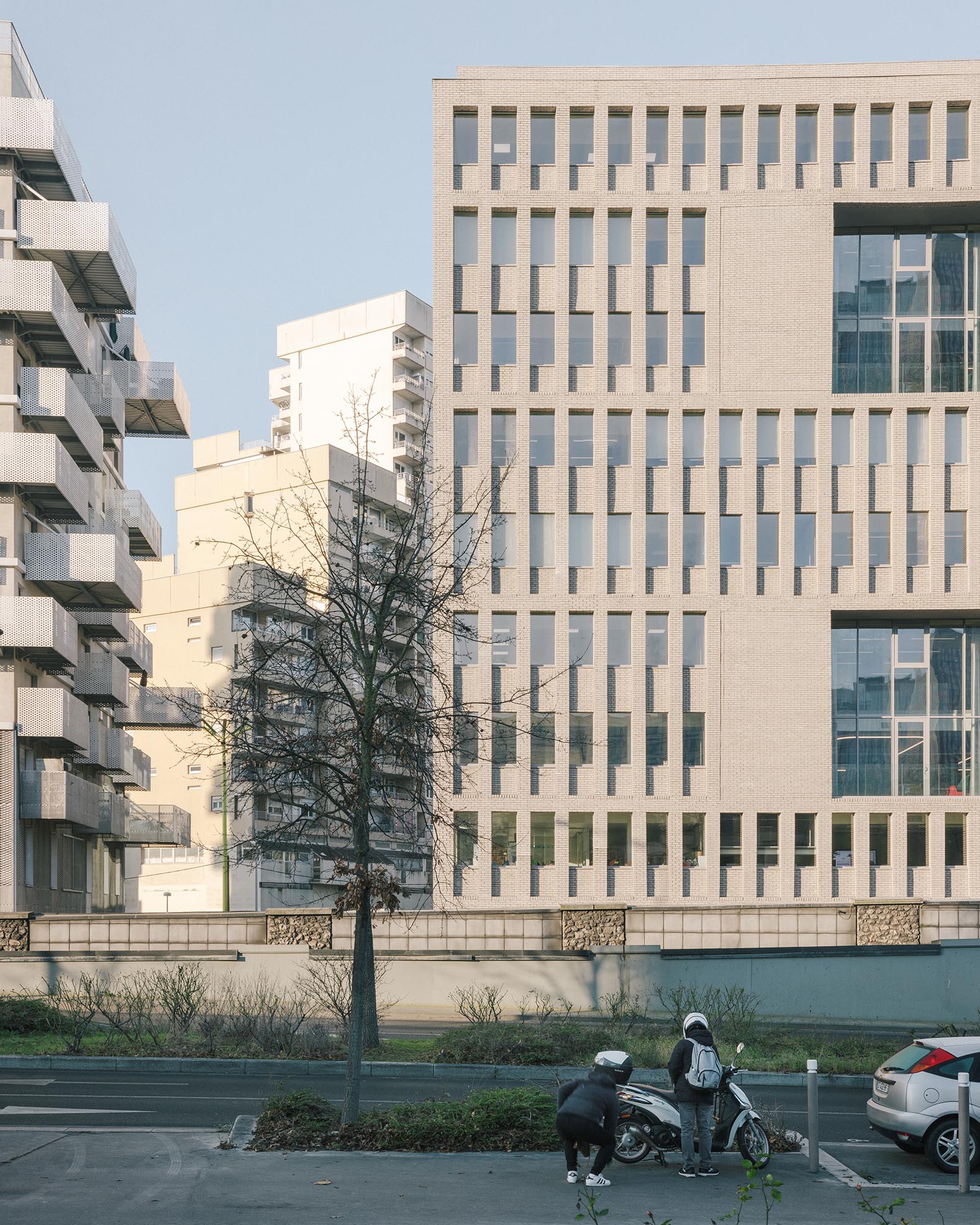In the heart of a district with historic and singular architecture, the Léonard de Vinci, thanks to its large openings in the facade, forges its own identity and creates a dialogue with the already existing.
The large double-height windows of the agoras are signs intended to be read from afar. Visible from the Passerelle de l'Arche, from the U Arena or from the D914, their transparency opens up the school's common spaces to the outside world and "lets passers by seeing" the school's life. Oriented towards La Défense, these openings give a direct view of the park of the Puteaux cemetery which the building overlooks. At night, the relationship is reversed and this diaphaneity between the school and the city enlivens the new Aimé Césaire urban boulevard.

Léonard de Vinci Institute by LAN. Photograph by Charly Broyez.

Léonard de Vinci Institute by LAN. Photograph by Charly Broyez.
Project description by LAN architecture
The ambition of the Léonard de Vinci Institute project is to bring together very heterogeneous and sometimes contradictory fragments of the city. At the interface of the omnipresent Grande Arche of the La Défense business district, the Égalité-Fraternité apartment buildings and the Maurice Ravel home by Jacques Kalisz, the U Arena stadium by Christian de Portzamparc and the Terrasses, the Institute extends the overall development of the Croissant undertaken in 2015 by Paris la Défense following the demolition of part of the former MP89 overhead car park.
Designed as part of the first phase of the district's urban renewal (2015-2022), the school stands alongside the infrastructure of the Croissant. Structured around the roadworks of the 1970s, the D914, whose curve the Institute follows, allows the building to benefit from the centrality and immediate proximity to several public transport stations (Nanterre-Préfecture, the future Nanterre-La Folie station, La Défense Grande Arche).
The large double-height windows of the agoras are signs intended to be read from afar. Visible from the Passerelle de l'Arche, from the U Arena or from the D914, their transparency opens up the school's common spaces to the outside world and "lets passers-by see" the school's life. Oriented towards La Défense, these openings give a direct view of the park of the Puteaux cemetery which the building overlooks. At night, the relationship is reversed and this diaphaneity between the school and the city enlivens the new Aimé Césaire urban boulevard.

Léonard de Vinci Institute by LAN. Photograph by Charly Broyez
The organisation of the interior spaces was designed to encourage and promote interaction between students, teachers and administrative staff. To this end, particular attention was paid to the circulation routes, which are as important as the spaces they serve. Their staging transforms the routes - especially the vertical ones - into an experience that reveals the life of the school.
Directly associated with the classrooms, the double-height rooms are dedicated to computer self-service. Extended by accessible terraces that open onto the city, they become meeting and exchange places for all users.
By grouping the programs on two levels, the school takes the form of a vertical campus, where the full space (classrooms, agora, social room, etc.) participates as much as the empty space (corridors, staircases, terraces) in the increase of exchanges.
A typical floor includes classrooms, computer rooms, a teaching space for teacher-researchers and an opening onto the computer self-service area located in the double-height common space. The 2/3 ratio chosen for the classrooms is ideal to accommodate the different types of teaching.
The school functions on two levels where the mixed programming allows for greater flexibility of use.















































